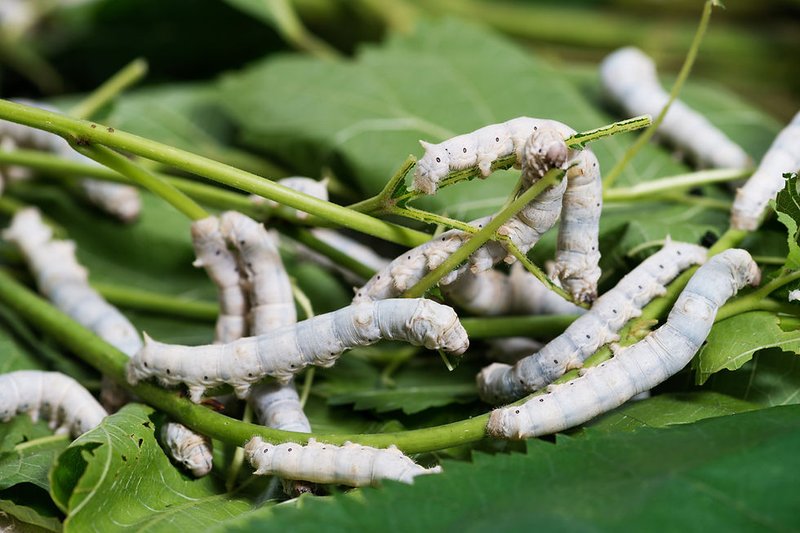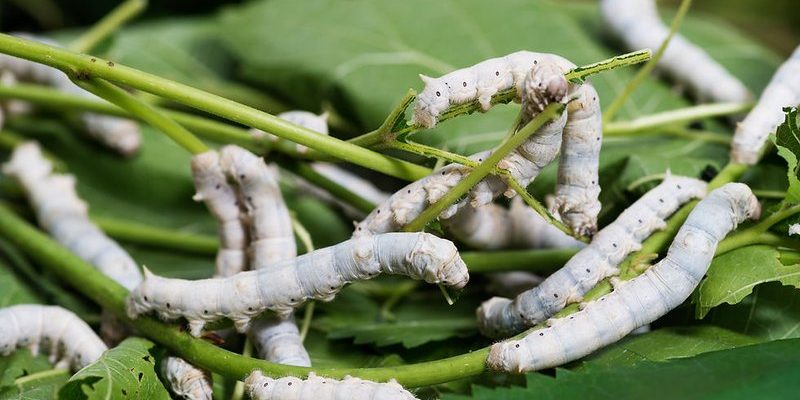
You might be thinking: why bother with silkworms when we have so many other synthetic materials? Well, that’s a great question. Silk isn’t just a luxury fabric; it’s a testament to sustainable farming and eco-friendly practices. So, grab your coffee, and let’s dive into why silkworm farming remains not just relevant but vital in today’s society.
The History of Silkworm Farming
Silkworm farming dates back thousands of years, specifically in ancient China. This practice, known as sericulture, was closely guarded for centuries. The Chinese believed that silk was a gift from the gods, and they weren’t wrong about its value. The process involves raising the larvae of the *Bombyx mori* moth, which feeds on mulberry leaves and spins silk cocoons.
Over time, the love for silk spread beyond China, reaching places like Japan, India, and even Europe. Each region adapted sericulture to their culture, contributing to the rich tapestry of silk production. While the methods have evolved, the core idea remains the same: harvesting silk from silkworms is a blend of art and science.
In today’s context, silkworm farming not only preserves this ancient tradition but also keeps it alive as a cultural legacy. As you learn about why silkworm farming is still relevant, it’s essential to appreciate its historical roots and how they shape modern practices.
The Economic Impact of Silkworm Farming
You might not realize it, but silkworm farming plays a significant role in today’s economy, particularly in rural areas. Here’s the thing: many farmers rely on silk as a source of income. The global silk market is worth billions of dollars, providing jobs for thousands.
– Job Creation: From farmers who tend to the silkworms to workers who process the silk, this industry supports entire communities.
– Rural Development: In countries like India and China, silk production can uplift rural economies, providing a steady income and reducing poverty levels.
By choosing to engage in silkworm farming, communities not only preserve their heritage but also forge a sustainable economic future. It’s more than just raising worms; it’s about creating opportunities and building resilience.
Sustainable Practices in Silkworm Farming
Let’s talk about sustainability. In a world increasingly focused on eco-friendly practices, silkworm farming stands out. Unlike synthetic fibers that come with a hefty environmental footprint, silk is a biodegradable material.
Farmers practicing sericulture often utilize organic methods, relying on nature rather than harmful chemicals. This approach aligns perfectly with sustainable agriculture goals.
– Minimal Land Use: Silkworms are raised in small spaces, making them an efficient choice for farmers.
– Low Carbon Footprint: The process of raising silkworms emits fewer greenhouse gases compared to industrial textile production.
In many ways, silk farming is a bridge between traditional practices and modern sustainability. It showcases how agriculture can be both productive and environmentally friendly—something that aligns well with today’s values.
The Unique Properties of Silk
You might be wondering why silk remains a preferred fabric for luxury items. Well, it turns out silk has an array of unique properties that set it apart from other materials.
For starters, silk is incredibly strong yet lightweight, which makes it perfect for everything from clothing to upholstery. It also has a natural sheen that adds elegance to any garment. But here’s the kicker: silk is also hypoallergenic and breathable, making it suitable for various skin types.
– Moisture-Wicking: Silk can absorb moisture without feeling damp, making it comfortable to wear in various climates.
– Temperature Regulation: It keeps you warm in winter and cool in summer, which is pretty handy for versatile dressing.
These properties ensure that silk never goes out of style, and silkworm farming continues to play a pivotal role in meeting the demand for this exceptional fabric.
The Role of Technology in Silkworm Farming
As we step into the tech age, even silkworm farming is embracing innovation. Modern techniques enhance the efficiency of farming and production. You might think of tractors or drones, but in this case, it’s more about genetic research and farm management software!
Advancements in biotechnology allow farmers to cultivate healthier silkworms, which in turn produces better quality silk. Additionally, tools and apps help farmers monitor conditions and manage their stock more effectively.
– Genetic Research: By studying silkworm genetics, researchers are developing strains that are more resistant to diseases, resulting in higher yields.
– Smart Farming: Utilizing technology helps farmers make informed decisions, ensuring optimum conditions for silkworm growth.
So, while the core of silkworm farming remains rooted in tradition, technology is breathing new life into it. This balance of old and new creates a robust farming framework that can meet modern challenges.
Silk’s Cultural Significance Today
Silk is more than just thread; it’s a story woven into the fabric of various cultures. From traditional garments to art pieces, silk holds a special place in cultural expressions around the world.
In countries like India, silk sarees are not just attire; they represent heritage, craftsmanship, and identity. Similarly, in China, silk is integral to weddings and other celebrations.
– Artisanship: The skills involved in creating silk products are passed down through generations, preserving artistic heritage.
– Cultural Festivals: Events around silk and its production celebrate this material and the communities behind it, fostering a sense of unity and pride.
In a way, silkworm farming nurtures not only the economy but also the cultural heart of societies. As we appreciate the silk around us, let’s not forget the stories it tells and the artisans who bring it to life.
The Future of Silkworm Farming
What does the future hold for silkworm farming? As more people become aware of sustainability and ethical practices in fashion, the demand for silk may rise. This perspective positions silkworm farming as a relevant choice for eco-conscious consumers.
Farmers are also exploring new markets by creating silk-based products that cater to modern needs. Innovations such as silk-infused skincare products and other health-related applications illustrate silk’s versatility beyond textiles.
– Market Expansion: The potential for silk to enter new markets offers exciting opportunities for growth.
– Eco-Friendly Innovations: As demand grows, so does the responsibility to ensure that production stays sustainable and ethical.
So, whether it’s a luxurious gown or a silk scarf, the future of silkworm farming appears bright. It’s about blending innovation with tradition, and finding ways to keep this age-old practice thriving.
Silkworm farming is far from being a relic of the past. It’s a blend of history, sustainability, and cultural significance, making it incredibly relevant in today’s world. As we move towards a more sustainable future, practices like silkworm farming will be essential in supporting eco-friendly fashion and economic growth.
So next time you wrap yourself in a silk scarf or admire a beautifully crafted silk piece, remember the journey it took from silkworm to fabric. Embracing this age-old practice can help us appreciate not only the beauty of silk but also the stories, livelihoods, and traditions behind it. Whether you’re a fashion lover or an eco-conscious shopper, silkworm farming offers a window into a better, more sustainable world.

